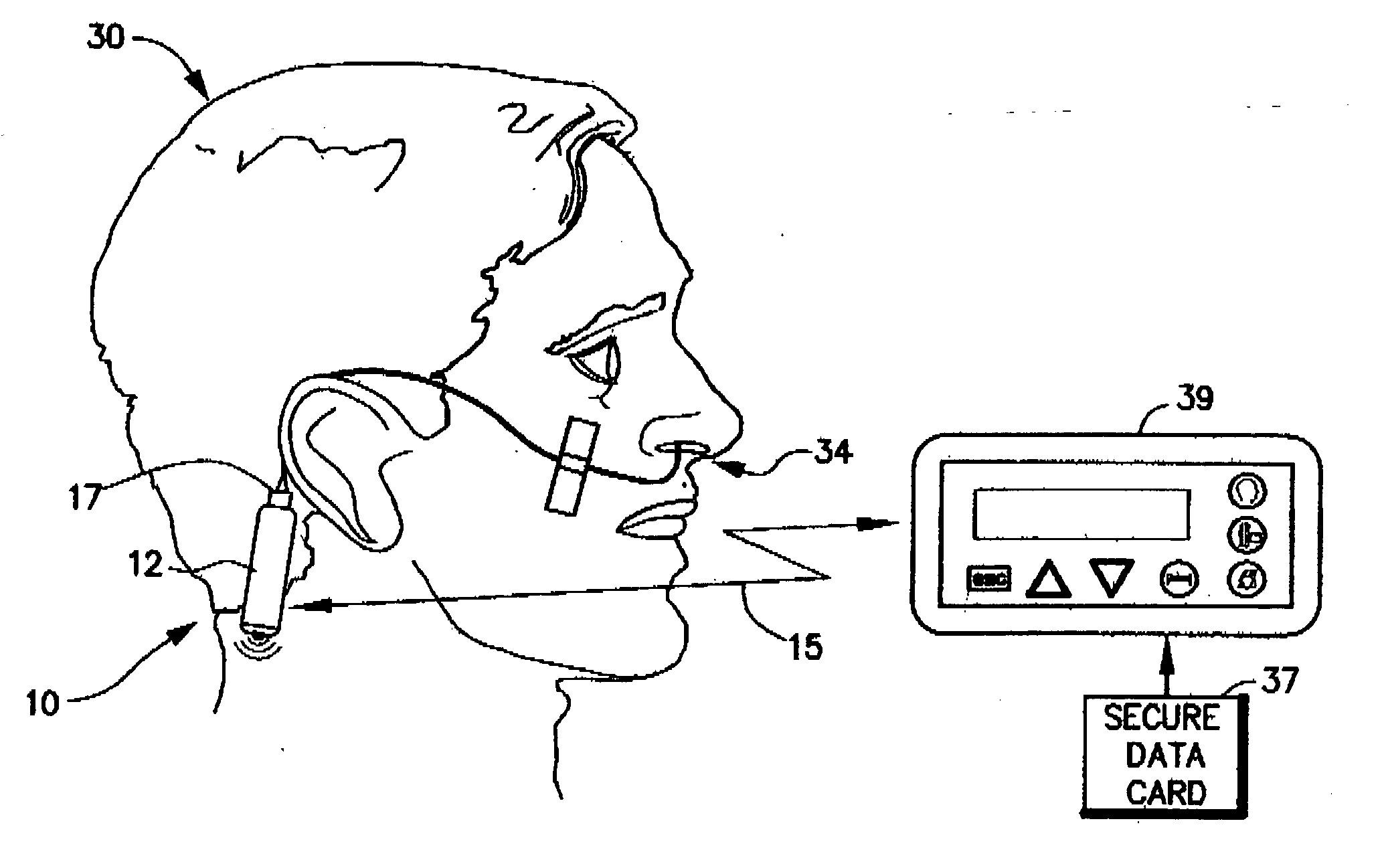Self-condensing pH sensor and catheter apparatus
- Summary
- Abstract
- Description
- Claims
- Application Information
AI Technical Summary
Benefits of technology
Problems solved by technology
Method used
Image
Examples
Embodiment Construction
[0025] The present invention is a system comprising a plurality of components, including a self-condensing pH sensor distally mounted on a catheter, a transmitter with hydration sensing circuitry for the pH sensor, and processing receiver / data recorder. Referring to FIG. 1, a perspective representation of the present invention system 10 is shown where the catheter 18 is exiting one nostril 34 and draped over the ear of a typical patient 30. The proximal end 17 of the catheter 18 is connected to a transmitting device 12, which communicates with a processing receiver with data recording capability 39 (herein referred to the “processing receiver / data recorder”39). The preferred method of communication is by wireless means 15, however, it is anticipated by the Applicants that the transmitting device can communicate with the processing receiver / data recorder 39 by a direct wired means. The wireless transmitter device 12 incorporates an antenna that transfers the measured pH data by emplo...
PUM
 Login to View More
Login to View More Abstract
Description
Claims
Application Information
 Login to View More
Login to View More - R&D
- Intellectual Property
- Life Sciences
- Materials
- Tech Scout
- Unparalleled Data Quality
- Higher Quality Content
- 60% Fewer Hallucinations
Browse by: Latest US Patents, China's latest patents, Technical Efficacy Thesaurus, Application Domain, Technology Topic, Popular Technical Reports.
© 2025 PatSnap. All rights reserved.Legal|Privacy policy|Modern Slavery Act Transparency Statement|Sitemap|About US| Contact US: help@patsnap.com



